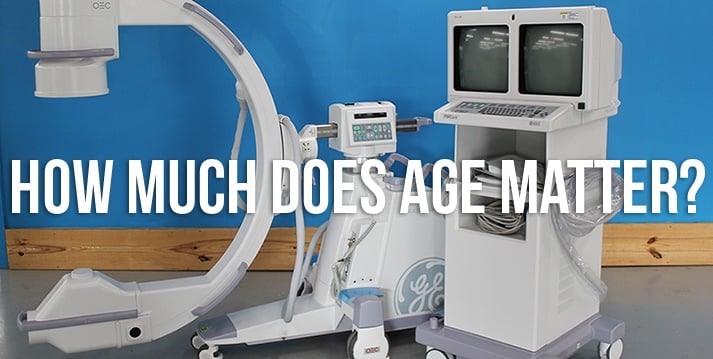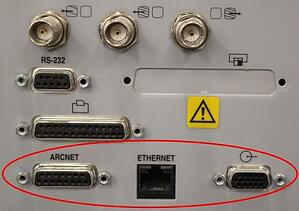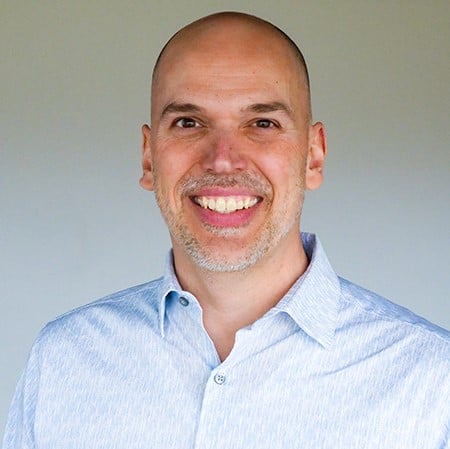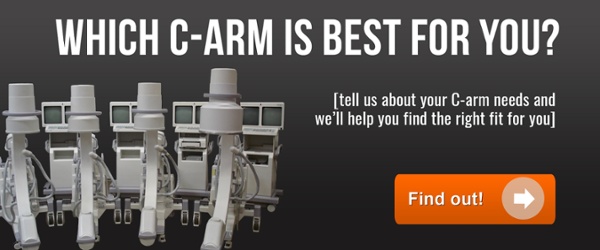
One of the first questions we’re asked when we propose a used or refurbished C-arm to a customer is, “What year was it made?” This is a logical question to ask; a question one asks almost any time they buy something used. In the case of used C-arms, there are several reasons this information seems important, but simply knowing the date of manufacture (DOM) of a system can be deceiving.
The following are a few better ways to find out what you really want to know about used and refurbished C-arms.
Software Version
Why it matters: Later software releases are more stable and can indicate a hardware upgrade as well.
Why it matters more than system age: While it is true that newer C-arms leave the factory with newer versions of OEM software installed on them, it’s not always true that a more recent DOM translates into newer software in the field. Which software version is installed on a system comes down to the frequency with which the software has been upgraded. For example, it is entirely possible that an OEC 9800 made in 2002 could have a higher software revision installed than a 9800 made in 2004.
If you’re looking at buying a used or refurbished C-arm, your vendor can easily find out the exact software revision installed on the machine. Just ask.
Does It Have Onboard DICOM?
 Why it matters: If DICOM capability isn't built into the unit, you will need to purchase an accessory device before you can send any images to your PACS server.
Why it matters: If DICOM capability isn't built into the unit, you will need to purchase an accessory device before you can send any images to your PACS server.
Why it matters more than system age: Onboard DICOM is the most direct way to get your images to your PACS server. Not all manufacturers made this feature standard at the same time, so it is possible for a system without onboard DICOM to be a couple of years newer than a system with onboard DICOM.
Component Life
Why it matters: The image intensifier (II), X-ray tube, and CCD camera are some of the more expensive parts to replace on a C-arm system.
Why it matters more than system age: System DOM can be a misleading indicator of the usable lifespan remaining on a component. An older system used in a low-traffic facility may have much more component life remaining than a newer system used in a high-traffic environment. Moreover, a used system may not even be carrying its original parts anymore.
A better way to inquire after component life is to ask the DOM of each major component and to ask your C-arm vendor if they can tell you what type of facility the machine was last installed in.
Overall Condition
Why it matters: Any part of a C-arm that is wearing now will need replacement that much sooner. Unseen wear and tear can start to nickel and dime you just a few months after you buy a system.
Why it matters more than system age: DOM can be every bit as misleading on overall condition as it can be on component life. In fact, the same principle applies: higher facility traffic generally translates into more wear and tear. More movement is harder on C-arm components like casters, brake pads, cable casings, and locks. More frequent use is harder on internal components like high voltage tanks and collimators. Beyond that, as with the major components we discussed earlier, it may also be that some of the other parts installed on your system are not the originals. An older C-arm could be operating with much newer parts than a more recent system.
In the case of refurbished C-arms, a quality refurbishment process all but eliminates these concerns with repair and replacement of worn or damaged system components.
In the case of used C-arms, more relevant information to get from your vendor is the individual DOM for each of the following:
- X-ray tube
- Image intensifier
- CCD camera
- Collimator
- High voltage tank
You should also request some photos or video of the system. These will be more indicative of its condition than assumptions based on DOM.
The Takeaway
Ultimately, system age is still valuable information that can help you manage your expectations as you consider a C-arm. However, it is not the best indicator for some of the most important aspects of the equipment. As you search for the best C-arm for you, we encourage you to look into further details for a more inclusive picture of what the secondary market has to offer.
Click below to tell us how we can help you get started:

Gary Dodge
Gary Dodge is a C-Arm Product Manager at Block Imaging. Gary loves to consult with buyers and help them find the best solution for their C-Arm needs. Outside of the office, Gary loves trying new kinds of ethnic cuisine and visiting the Smokey Mountains with his family.





